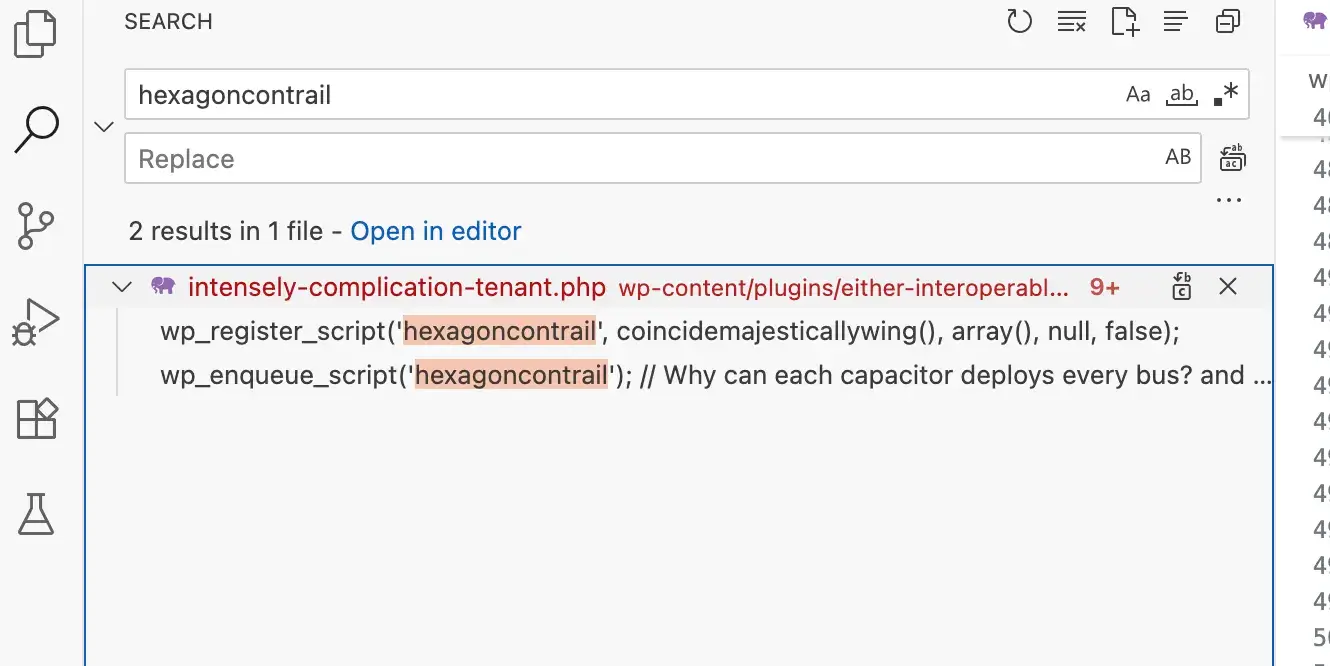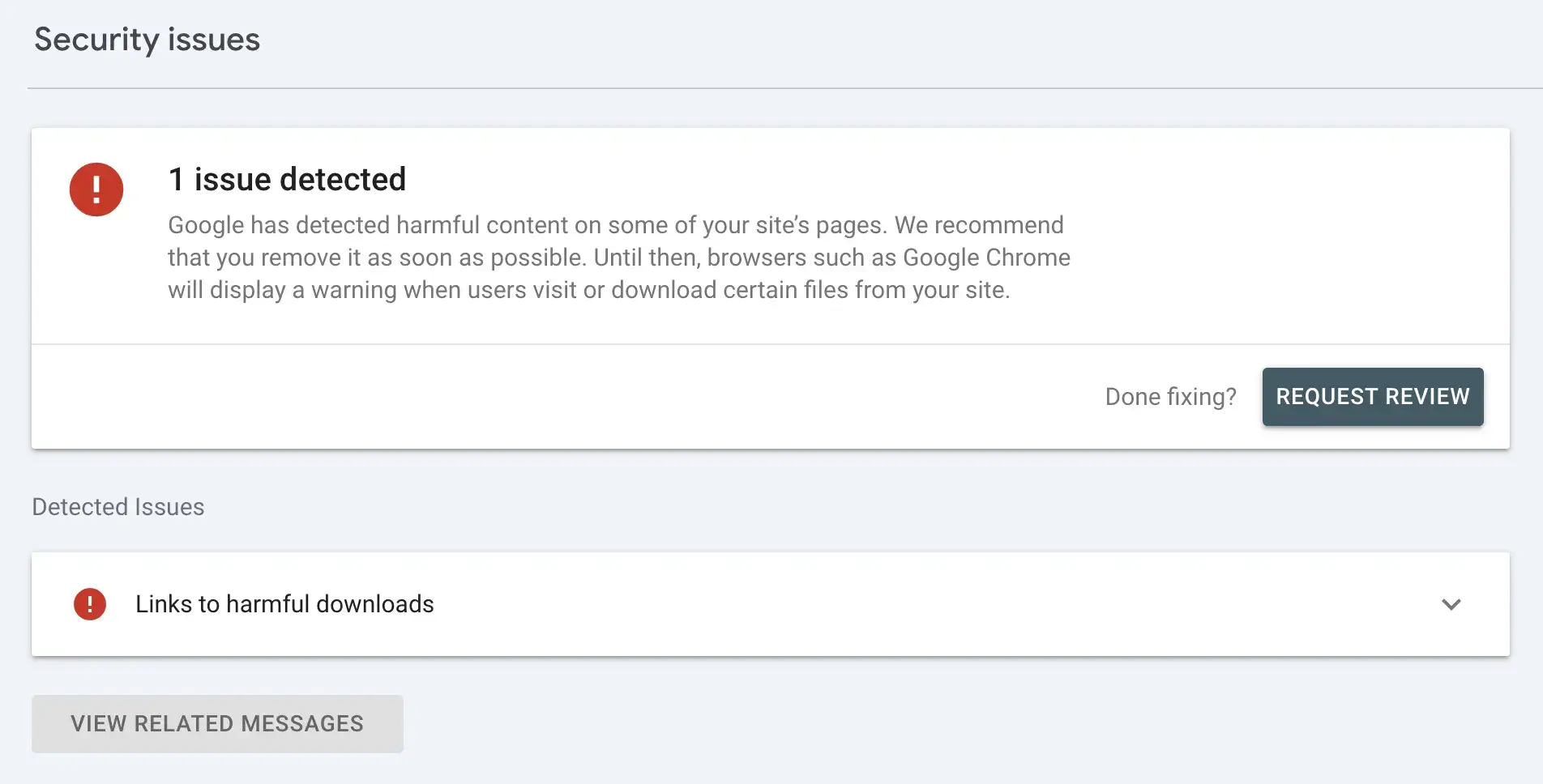That recently happened to one of our clients.
Within a week of launching their new PPC campaign, we observed a significant decline in visitor traffic in Google Analytics. Then came the dreaded “Dangerous site” warning. We notified our client ASAP. Because our client self-hosted their website, they investigated the issue and believed it would resolve itself, but it didn’t. In fact, days went by, and traffic plummeted.
As a good marketing partner, we intervened before the issue caused long-term damage to their brand and SEO. After all, leaving a security issue unresolved for even a few days can destroy your SEO, ruin your credibility, and lose customers.
Here’s how we fixed harmful links for a “Dangerous site.”
Step 1: Confirm the Error
We opened the developer tools in Chrome and checked the network activity. One line stood out:
https://simplecopseholding.com
A known malicious URL was the culprit.
Step 2: Trace the Root Cause
We searched through the WordPress directories, including wp-content, root files, database entries, and theme folders. Nothing suspicious.
So, if the malicious URL wasn’t hard-coded, it had to be dynamically generated by a script buried deep within the site.
Step 3: Find the Alias
Step 4: Locate the Corresponding wp_enqueue_script Function
In WordPress, all scripts are enqueued through PHP. We suspected this malicious link was too.
We downloaded the full WordPress instance and ran a project-wide search in Visual Studio Code. Sure enough, we found the script name buried in a plugin called either-interopable-blob. This file shouldn’t have been there.
Step 5: Remove the Malicious Plugin
We checked the plugin list inside the WordPress admin, expecting to find it. We didn’t. That’s because the malware was hidden from the dashboard UI.
So, we connected directly to the plugin directory via FTP, and there it was, sitting in the plugins folder. We confirmed it wasn’t core to the website and immediately deleted it.
Step 6: Report the Changes to Google
Once the site was clean, we requested a review from Google, detailing every step we took. Within a couple of days, the “Dangerous site” designation was lifted, and traffic started returning the same day. We got lucky this time, though.
What This Means for Business Owners
If you’re managing your own hosting or using a DIY approach on WordPress, be extremely cognizant of security. Modern malware is sophisticated and can hide deep inside your website, hurting your brand.
Additionally, the fix for malware is not always instant. By the time you resolve it, you may have already suffered in SEO, ad performance, and reputation. There’s also the review period, which can take weeks for Google to review your site and determine whether the “Dangerous site” tag can be lifted.
Before another hosting issue arises, consider using a reliable website hosting solution.
The Bottom Line
A website flagged by Google Chrome as dangerous not only loses clicks, but also customers.
At Uplancer, we help businesses safeguard their digital brand. From WordPress maintenance to security audits, our team ensures your site stays secure, visible, and trusted by both Google and other search engines, as well as your customers.
If you’re experiencing a “Dangerous site” warning, don’t wait any longer. Contact Uplancer for a complete site security audit and technical cleanup before it’s too late!
















